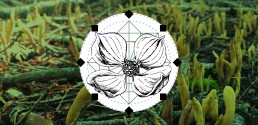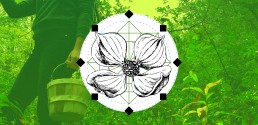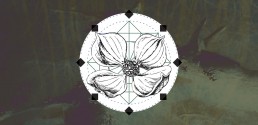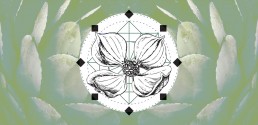Conversing with the Plants: Jason Scott "fixing the celestial wanderers," or the alchemy of the Fungal queendom
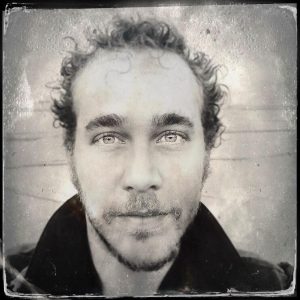 Jason Scott, mycologist, alchemist, artist, joins us today. Jay is the curator of Alchemycology.com and his active in the Radical Mycology. He runs Feral Fungi and is primarily focused on the interrelationships between alchemy and mycology. Without further ado, let's hear what he has to day:
Jason Scott, mycologist, alchemist, artist, joins us today. Jay is the curator of Alchemycology.com and his active in the Radical Mycology. He runs Feral Fungi and is primarily focused on the interrelationships between alchemy and mycology. Without further ado, let's hear what he has to day:
~
Casandra: Tell me how you got started with alchemy…
Jay: My journey into alchemy was the summation of a number of synchronicities in my life that began before I really even knew what alchemy was in the practical sense that I understand it now. That journey started with a departure from a standard path to go to Hawaii and study natural medicine and cultural relationship to plants and the land. While I was there I experienced a lot and really dove into my personal relationships with plants. One plant in particular brought me to Pahoa and I was given some primary texts on alchemy and Ayurveda that really piqued my interest, including Real Alchemy by one of my favorite teachers Robert Bartlett.
When I returned from Hawaii, I found an intro into herbal alchemy class in Portland and at the end of the class the teacher shared that they had just gotten back from studying with Robert Bartlett in Washington, which motivated me to begin studying with one of the greatest alchemists of our time and one of the most humble teachers I have had.
C: And when did mushrooms begin taking center stage in your work?
J: While I was studying alchemy, the philosophy and principles really resonated with me, and I was mostly focused on getting a solid foundation in the herbal works. Mushrooms have always fascinated me in a number of ways, especially their potential as medicine, so I was curious where they fit into the tradition of alchemy. I discussed this with Robert Bartlett to see if he had any leads or insights. I also pondered some of the claims of the fungi being the philosophers stone, though from my understanding that was something practically completely different than anything in or dealing with the organic realm, and most likely metallic based.
To my own mind I saw mushrooms and queendom Fungi as somewhere in between the plant realm and the animal realm, as they are more closely related to animals on the tree of life and very different morphologically from plants as well. This led me down a path of experimentation and thought in working within the philosophy, principles, and practicum of alchemy as I understood it relating to other realms (mineral, plant, and animal) and to apply it specifically to the fungi. This has been a long and slow process and still has a long way to go, but it gave me the motivation to develop a unique way of working with and seeing the fungi, specifically through the lens of Hermeticism and alchemy.
It also gave me the motivation to look at the queendom Fungi as a whole and the way they fit into the philosophical underpinnings of alchemy and the parallels that exist between the two worlds. Both have so much to offer us in our understanding of reality and our relation to the natural world.
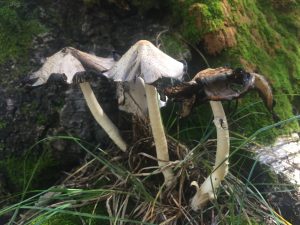 C: What are some of your biggest inspirations and why?
C: What are some of your biggest inspirations and why?
J: I’d have to say nature in general, as my understanding and experience of alchemy is that it is all based in observation of natural processes and mimicry of those things, witnessing patterns of life and death, and everything in between. I obviously have to give it up to the fungi here too, for all they offer us in terms of healing ourselves and the land, in the lessons they teach us about life and death and reality, and in the ways they function within the ecosystem as connecting everything. They are really like the perennial philosophy of the natural world, as alchemy and many other traditions are to our world and understanding.
I have also had a strong connection with shamanic traditions and cultures and how those influence the way we perceive and move through the world. To me, they parallel the alchemical traditions, and in certain instances they are still alive and have never been broken in the same way that alchemy was to the west. I think that working with the perennial philosophies of both these worlds has a lot to offer us in relation to ourselves and to the world.
As far as people go, Kathleen Harrison was a large influence in my dive into natural medicine and cultural relationships to plants, or ethnobotany. Robert Bartlett really gave me a strong foundation in the art and a supportive place to practice and ask questions and to further develop my work. My good friends and fellow spagyricists Sajah and Whitney Popham, in the way they work with and connect to the plants; Peter McCoy, for the opportunities he has given me and the faith he has in my path and projects as well as all the good work he does with the fungi locally and globally. There are really too many to list, but there are a few who have been instrumental to my growth and exposure. Also Jenn Zahrt, Catamara Rosarium, and Marcus McCoy for their support of my work and giving me a platform to share and express my thoughts and research.
C: Tell me about one of your most exciting/scary/harrowing/unexpected experiences in your journeys of talisman-making and alchemy?
J: I don’t know that I have any specific instances I’d care to share here, but it really is interesting watching people and seeing the different energies and archetypes move through them, especially when they call those things in. Really makes the journey a lot more real and to recognize the patterns and see them come alive in people and through the medicine.
C: You've created some very fascinating correspondences between various species of fungi and astrological influences. Tell me about how you got started on that work and where you see it leading? What do you sense the relationships are between this class of organisms and the stars?
J: I was really intrigued to find that fungi, which have always fascinated me, were almost completely neglected in any of the traditional texts. You will find that a lot of plants, especially common ones in Europe, have traditional planetary correspondences. That just does not exist for fungi. One of my favorite parts of the Work is looking at the different levels of the archetypes – planetary, elemental, principles – and seeing the way those patterns reflect in nature. It is said that when something dies, it returns to the sphere on the Sephiroth from which it came, and each sphere is associated with a different planet, so that thing returns to that archetypal ring when it ‘gives up the ghost’ as they say.
This correspondence is instrumental to alchemy especially when working with spagyrics and creating the initiatic medicines that align the mind, body, and spirit through the work, but also imbibing the tincture. So when working with the fungi, or herbs or metals, your still acts like a microcosm of the universe and you can capture different planetary energies and bring them into the medicines that you are making, especially if you dial in more specific timing, but you can also just go by the day of the week and the planetary hour of the day.
For me this became a fun exploration as I began looking into the fungi and realized they didn’t have any traditional correspondences. I made a central part of my work looking at the archetypes of the planets and the specific morphology, qualities, and actions of different fungi in order to make correspondences. As I found the mushrooms are very complex and tricky, so I laid my work as a foundation and share it as an opportunity for people to delve deeper and to create their own correspondences for the personal work.
It also seems that working specific planets into the work helps to illuminate different properties and qualities that one wishes to draw out more. I also found it really interesting that ‘planet’ means celestial wanderer and that ‘plant’ means to fix, so I look at plants as ‘fixing the celestial wanderers’ and tend to draw that same associations to the mushrooms in that way.
I am hoping this work lays a foundation for working with and seeing more fungi in this way, as I think it tends to add another layer of understanding to the ways we see and work with fungi. It is also just a fun thought experiment to become more familiar with the planetary archetypes and the actions and functions of the mushrooms.
C: Why do you think that alchemy neglected the fungal queendom for so long?
J: I think it just kind of goes along with the fungal phobia that has been a part of many cultures over time, they really represent death, and in that sense weren’t thought to be suitable for human consumption. It’s really fascinating because it seems like the work of the Fungi parallels that of the alchemist and that they would compliment each other very well. I am still hoping that at some point I will stumble across some ancient text that reveals all of the things I have been looking for and working on.
C: Tell me more about your work in Nepal. How did that get started and what are some of the things you have experienced there? What are you hoping to preserve and/or change?
J: So I had this amazing opportunity to go to Nepal with Todd Caldecott of the Dogwood School of Botanical Medicine and to meet one of his teachers over there, Madhu Bajra Bajracharya who is a part of a lineage that goes back over 750 years. More specifically the lineage of Ayurveda is the Rasa Shastra lineage which deals with metals and minerals as medicine, and really mirrors western alchemy in a lot of different ways. So while I was there I got to see Madhu practice in his clinic and share some of the traditional clinical wisdom that they have around helping people. We also got to learn how to prepare some of their traditional medicines including some of the mineral medicines that they work with.
Vaidya Madhu’s father Vaidya Mana had a vision of creating a clinic in Nepal to preserve their traditional wisdom in practicing clinically and preparing traditional medicines. They also have a handful of texts from their family in various disciplines of Ayurveda that are all in Sanskrit, written on Palm leaves, and we hope to help them keep those manuscripts in Nepal.
Todd wanted to help fulfill that vision, and it really moved me too so I decided to jump on to help them as well. At this point Todd and I are working out the beginning stages of finding funding for the project so we can build a center over there to train Ayurvedic physicians and to purchase the manuscripts from the Bajracharya family so we can keep them in Nepal and make them available for scholars of Sanskrit and students of Ayurveda.
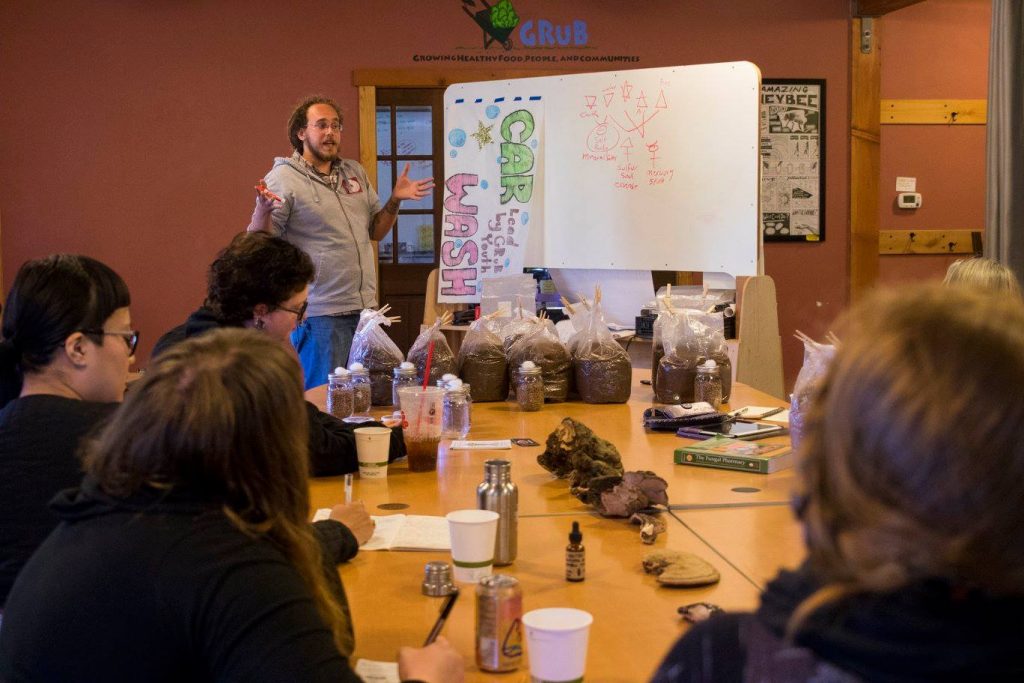
C: How do you see yourself as different from other people who do what you do?
J: I am just persevering and trying to do good work and support these amazing systems of traditional medicine that I have had the opportunity to explore and the amazing teachers who have shown me good things along the way. I think there is so much incredible wisdom that would be a shame to lose it to the sands of time. So primarily I want to support that and see it flourish in a good way, and see the people who are perpetuating it flourish in a good way, too.
That said, I am not trying to get too far ahead of myself. I see myself as a lifelong student with a lot to learn, yet I also believe that I am carving out a unique path with the mushroom work and intend to move forward in that way. I have been told that I am really pioneering a field in that regard, but I also just try to remember where I am coming from and to stay in service to the Fungi and the Tradition, and all of the other medicines and ways that have helped me get to this point.
I am looking forward to watching this work blossom in the future as it has grown so much since I began.
C: What challenges have you had to overcome to get where you are today?
J: I think mostly overcoming self-doubt and believing in myself and in the medicine, and recognizing my place in service to those things and then just trusting the journey. It has been strange being so deeply involved in not one but two fringe topics and kind of bridging the gap between the world of mycology and the world of alchemy. It is fun and challenging, especially just relating these things that I am studying and know and having to repeat them to people who know one part, or people who know the other, or most of the time people who know nothing about either. In that regard it is kind of fun too, and really nourishing when people are really interested and supportive.
The other hardest part is figuring out all of the ins and outs of working all of these good things into a business too and making them into something that I can sustain myself with as well as offer in a really good way.
C: Where do you see yourself five/ten years from now?
J: Hopefully continuing these works and having at least a primary book finished by then, elaborating some of the ideas I have been sharing and teaching, as well as some more solid research into some of the theories and types of extractions I have worked on and created. I also hope to deepen my medicine practices and to offer consultations to people, which I am really ready to start now, but I hope to apply all of those things and offer them in a good way to all of the people who need help, especially in interpersonal work and trauma.
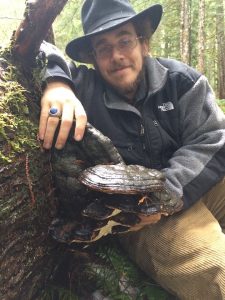
C: What is your theory of change in the world? (How do we get things to be different/better?)
J: Oh man, that is a big question, and really instrumental to the path that I am on. I initially began that path externally by trying to change external systems, which do need a lot of change, But then I realized how much internal work needs to be done first and found that these paths lead to that internal shift and wisdom that I think a lot of different people need. I feel like we are culturally addressing some really deep traumas and that those things lead to the conditional patterning that we see expressing themselves in really toxic ways. I think that all different pathways are necessary to address that change and have found my ‘revolutionary’ or ‘evolutionary’ work to be through the medicine and sharing and working with it to help people in that way, as well as all of the physical ailments they deal with that are sometimes connected to that as well.
Another element that gets frequently overlooked are the spiritual afflictions which I feel are at the root of a lot of the cultural trauma that we experience, and I think there could be a lot of benefit in looking at those areas and addressing them through different means. I think the plants and fungi play a crucial role in this part of the equation, and I personally have learned a lot from them and hope to continue to grow in that wisdom and hope to share it as well.
C: Thanks, Jay! We look forward to more of your writing and research about the alchemy of the fungal queendom and more original artwork from you.
~
If you would like to see more of Jay Scott’s work, see his spagyric business FeralFungi and his contribution to Verdant Gnosis 3, titled “AlcheMycology: Applying Alchemical Principles to the Fungal Queendom” as well as his work with Radical Mycology.
Conversing with the Plants: Becky Beyer on foraging, folk magic, and more
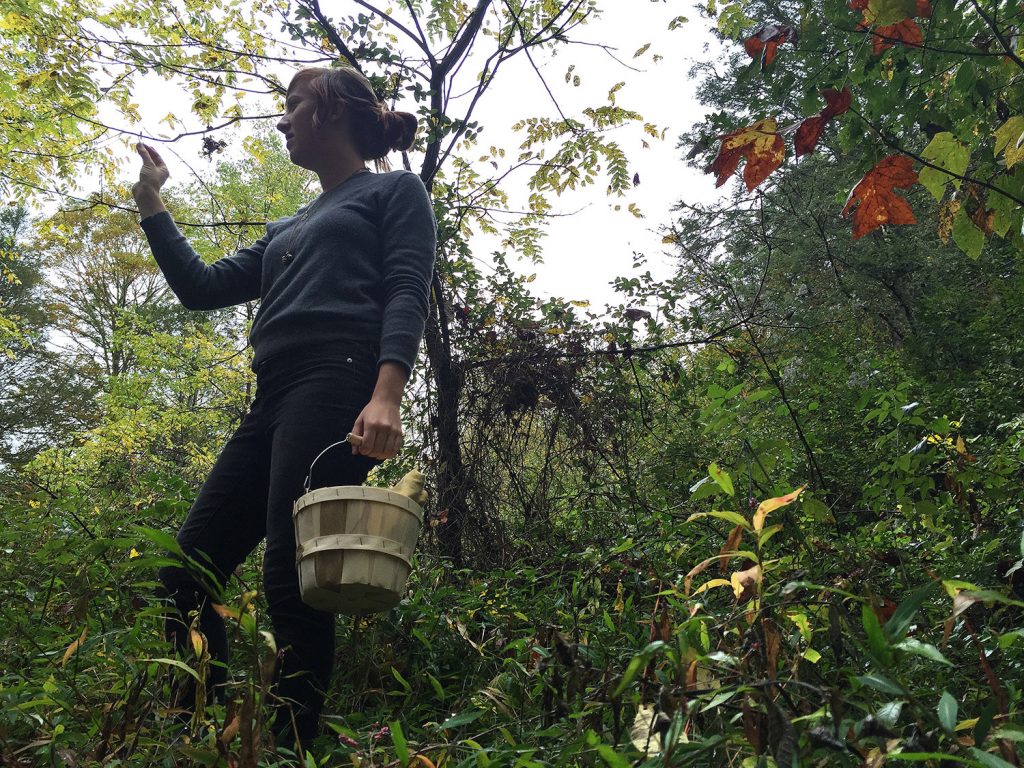
~
Meet Becky Beyer, is a farmer, woodcarver, herbalist, witch, and illustrator from Asheville, NC. I met her at Viridis Genii Symposium last year, where she both spoke and played in her musical group Kith and Kin. Becky bridges the worlds between academia (working towards her PhD in Ethnobotany) and Appalachia (teaching in the Primitive Skills community for the last five years). In this interview we discuss her various pursuits and passions in the world of plantlore.
~
Casandra: Thanks for taking the time to talk, Becky. I was happy to hear you present at the Viridis Genii Symposium last year and really impressed by your ability to weave together academic discourse, folk tradition, and personal experience. How did your relationship with the plants begin? Was there an experience that initially impacted you?
Becky: I think for me my relationship with plants began when I got sick with chronic mono—well, that’s what I called it. I had terrible fatigue and a hacking cough for almost a year. I saw six different doctors and they all just didn’t know what to do with me. I ended up visiting a local herb store in Vermont where I was living at the time and the woman there gave me goldenseal, thyme, and boneset. I drank these as a tea for three days, and my cough went away. After a year of struggling with it, I was in tears with joy. I realized then the incredible power of plants, and I started studying them right away. I changed my major in college from Medieval Studies to Plant and Soil Science. It radically shifted my life path.
C: I love hearing stories about the healing capacity of plants; it sounds like that really altered your course! We all relate to the world around us in unique ways; what does relating to plants look like for you?
B: For me relating to plants is my living, my passion, and my obsession. I do not relate to plants in the same way as a lot of my colleagues and peers, but I eat wild plants and plants that I grow everyday, and I make my living from them. I am a professional forager and teach people how to forage as my day job. I also sell my art as a botanical illustrator and teach ethnobotany at a local college. I have a spiritual practice that centers around certain plants, but there are other plants that I eat everyday or work with everyday. We have moved into old-friend territory. Rather than making offerings and much ceremony over every plant I pick, I have moved into a relationship where large cyclical offerings have taken the place of that practice. I wonder what my ancestors would have done; the practice of seasonal devotion is the best guess I have.
C: We each have different qualities and types of relationships with the people in our lives. Do you find this to be true with plants as well? Is there a plant that you work with and relate to in a particularly poignant way?
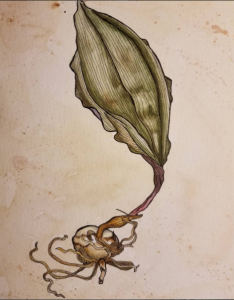
B: I have a handful of plants that excite me and call to me. I love my local Appalachian flora and their incredible histories and magics, specifically Pokeroot, Mayapple, and Sassafras. They are uniquely native, food, medicine, poison, and magic. I love that intersection of “what can cure can also kill” as well as the historical importance of these plants to Native peoples, hoodoo practitioners, and Appalachian folk practitioners.
C: I’m really curious about Appalachian plants specifically and the history of tending stands of wild plants, as well as the songs that folks in that bioregion use in their practice.
B: Growing and tending wild plants here in Appalachia is a complicated thing. Appalachians are used to conversely being romanticized and stereotyped as people who are both in touch with the land, and wanton destructors of nature in reference to mountain top removal and logging. It’s tough. We have incredible local folks with intact knowledge of the uses of hundreds of plants, and those whose only access to resources for making a living is by exploiting the environment.
Ginseng is the biggest cash crop from these mountains other than timber, and the way most people harvest it is to just take every single root they can find. Certain people tend stands on their land only to have them stolen in the night. Others protect certain areas for years only to pass away and have relatives remove all the plants. However, many people grow and cultivate wild plants or tend existing stands regardless.
As far as songs go, we have a lot of traditional songs here for working, but not many specific to picking wild plants. I am sure many people have family songs that were passed down that people sing as they foraged, but because not many do anymore, it’s hard to say. We are creating new traditions and songs for plants; hopefully someday we’ll get around to recording them to share with everyone. As a person of British Isle ancestry, I use the Carmina Gadelica for magical inspiration, and I’ve used the Yarrow charm and others to sing to the plants while I make their medicine. Here is the Yarrow Charm gathered in 1900 in Scots Gaelic:
I WILL pluck the yarrow fair,
That more benign shall be my face,
That more warm shall be my lips,
That more chaste shall be my speech,
Be my speech the beams of the sun,
Be my lips the sap of the strawberry.
May I be an isle in the sea,
May I be a hill on the shore,
May I be a star in waning of the moon,
May I be a staff to the weak,
Wound can I every man,
Wound can no man me.
C: That’s beautiful, thank you for sharing it. We are doing work here in the Northwest to create new traditions around plants and music as well; it seems like such an important aspect of those relationships. How do the plants influence your work as a magical practitioner and teacher?
B: Plants are the backbone of my practice and my work. Sharing and learning their histories and stories is my bread and butter, most literally. I like to focus my teaching about foraging and crafting on how to really work with a plant from a holistic perspective. Plants influence me with their bizarre actions, magical effects, and intoxicating dreamscapes. I work with them by eating them, using them for medicine, and often just by being in their presence or using their energy to aid in a working or make a charm. In Appalachian folk medicine and magic, sometimes just having the plant around, whether around your doorway or in a sachet, is enough to draw on its power. This is how I operate in their realm, and I am always listening, waiting for further instruction.
C: Do you have any advice or favorite resources to share with folks who are perhaps just beginning their work with plants on this relational level?
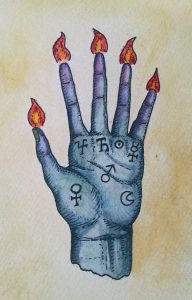
B: I would recommend my site, Appalachian Ethnobotany. It is a living database of resources on all kinds of plant uses and lore. I just added a folk magic section as well. This is a good place to start. Also, if you are not in Appalachia, reach out to local herbalists, older folks, primitive skills instructors, or anyone else deeply rooted in your bioregion. These are the people to learn from!
C: Well Becky, thank you so much for your time. I love the work you are doing—your art especially—and hope to continue seeing more of it in the herbal, magical, and rewilding circles.
~
If you want to learn more about Becky’s work, writing, music, and magic, check out her article in Verdant Gnosis Vol. 3 on Pokeroot, Mayapple, and Sassafras, as well as her Appalachian Ethnobotany site and her blog www.bloodandspicebush.com.
Also, the Viridis Genii Symposium, where I met Becky, is accepting submissions for their 4th annual event. Make sure to apply by November 28, 2017.
http://www.viridisgenii.com/presenter-proposals/
Conversing with the Plants: Marcus McCoy and Perpetuating the Mysteries
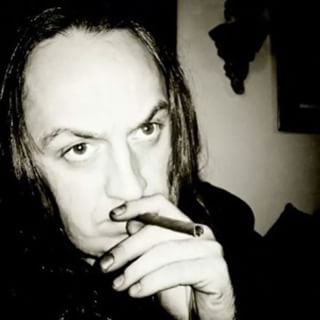 Meet Marcus McCoy, of the Viridis Genii Symposium, House of Orpheus, and newly, the Troll Cunning Forge. I met Marcus at an herb conference years ago and began following his work in the magical and herbal world. His concept of Bioregional Animism has been particularly influential. In this interview I was particularly pleased to hear his thoughts on the ways that language affects our magic and work with the plants as well as its historical roots and impact.
Meet Marcus McCoy, of the Viridis Genii Symposium, House of Orpheus, and newly, the Troll Cunning Forge. I met Marcus at an herb conference years ago and began following his work in the magical and herbal world. His concept of Bioregional Animism has been particularly influential. In this interview I was particularly pleased to hear his thoughts on the ways that language affects our magic and work with the plants as well as its historical roots and impact.
~
Casandra: Hello Marcus! Thanks for talking with me. We are here to discuss plants, magic, and community. How did your relationship with the plants begin? Was there a specific plant or moment of insight that particularly influenced you?
Marcus: I grew up on a rural Oregon farm and self-sufficiency was just a value system I was raised with; it was a necessity. Read more
Conversing with the Plants: Lara Pacheco
Welcome to the first interview in the Conversing with the Plants series. The intention of this series is to begin a dialogue about the potential for developing deep relationships with our bioregions and the plants that inhabit them while highlighting herbalists and magical practitioners who make this the focus of their work. For the first interview I spoke with Lara Pacheco. I attended herb school with Lara and have watched her work and relationship with the plants evolve over the years and was curious to know more about the ways those relationships inform her projects on the community level.
~
Casandra: How did your work with the plants begin? Was there a specific plant that you developed a relationship with? What type of training have you had along the way?
Lara: I could explore this question for hours. I think it began, really, as a child. I went to public school near the beach in Virginia. I saw that the land there was getting swallowed up by senseless development, Read more

